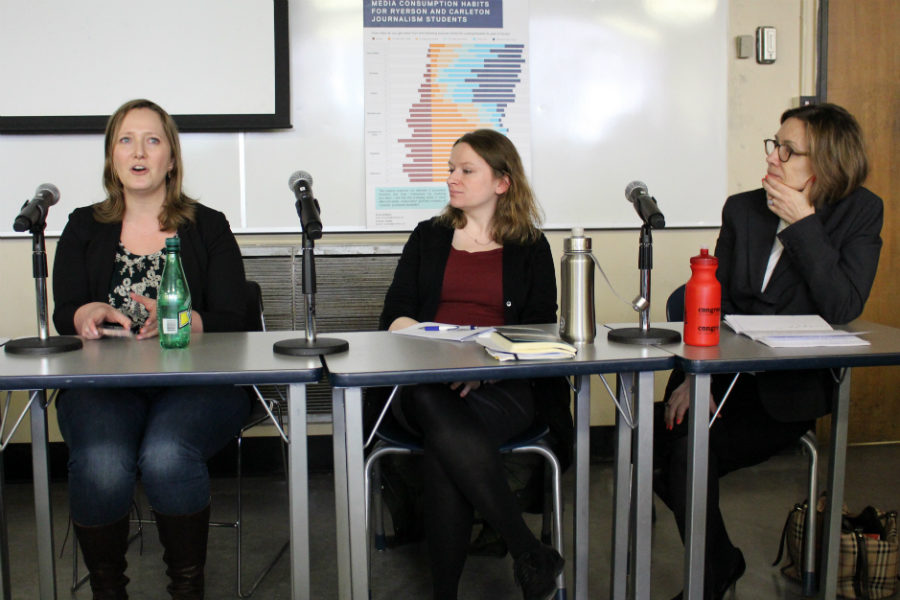The internet has turned the world into a buzzing hive of information, where news spreads faster than wildfire in a dry forest. But what drives these global news-spreading patterns? Why do some stories dominate headlines across continents while others fade into obscurity? In this article, we’ll dive deep into the forces shaping how news travels, from economic powerhouses to cultural connections, and explore how you can tap into these dynamics for better content strategies. Buckle up—it’s a wild ride through the digital news landscape.
Why News Spreads Like It Does
News doesn’t just float around aimlessly; it follows patterns shaped by complex global forces. Understanding these drivers is key to grasping how information shapes public opinion and why certain stories go viral while others don’t.
The Role of the Internet in News Dissemination
The web has revolutionized how news spreads, making it instantaneous and borderless. Platforms like X and global databases like GDELT track millions of articles, revealing how stories leap from one country to another in hours. A single tweet from a prominent figure can spark a global conversation, amplifying news faster than traditional media ever could. This digital shift has created a new ecosystem where speed and connectivity reign supreme.
The Power of News Superspreaders
Some countries and media outlets act like megaphones, amplifying stories to a global audience. Research from 2022, analyzing 140 million news articles across 183 countries, identified “news superspreaders”—nations like the U.S., U.K., and China that form a tightly knit “rich club.” These players dominate the global news agenda, often setting the tone for what the world talks about. Think of them as the cool kids at the global news party—everyone listens when they speak.
Temporal Dynamics: Timing Is Everything
Unlike older studies, recent research emphasizes the sequential spread of news—how one country picks up a story after another. This temporal dimension shows that timing matters as much as content. For instance, a breaking story in the U.S. might hit Europe hours later, then Asia, creating a ripple effect. This pattern helps explain why some events, like major political shifts, dominate global headlines almost instantly.
Key Drivers of Global News Spread
Several factors shape how news travels across borders. These aren’t just random; they’re rooted in economic, geographical, and cultural realities that influence global connectivity.
Economic Influence: Money Talks, News Follows
Economic power is a massive driver of news spread. Countries with higher GDPs, like the U.S. or Germany, often lead the charge in shaping global narratives. Their media outlets have the resources to cover stories extensively, and their economic clout gives them influence over what’s deemed “important.” For example, a U.S. economic policy change might dominate headlines worldwide because of its global impact.
GDP as a News Amplifier
Nations with robust economies don’t just produce news; they export it. The 2022 GDELT study found that GDP is a primary factor in determining which countries lead news dissemination. Wealthier nations have more media outlets, better technology, and wider reach, making their stories more likely to spread globally.
Geographical Proximity: Neighbors Share Stories
Geography plays a sneaky but powerful role in news spread. Countries closer to each other tend to share news more readily due to shared interests or regional events. For instance, a political crisis in Ukraine is more likely to dominate headlines in Poland than in Australia. The GDELT study used a gravity model to show how physical distance influences news flow, much like gravity pulls objects closer together.
Regional News Hubs
Think of Europe or Southeast Asia as regional news hubs. Stories often spread within these clusters before going global. A natural disaster in Japan, for example, might first dominate Asian media before reaching Western outlets, thanks to proximity and shared regional concerns.
Cultural and Linguistic Ties: Shared Roots, Shared News
Countries with shared languages or cultural histories often amplify each other’s stories. English-speaking nations like the U.S., U.K., and Australia form a tight news-sharing network because of linguistic ease. Similarly, Spanish-speaking countries in Latin America often echo each other’s headlines. The GDELT study highlighted how cultural factors, like shared language, act as bridges for news flow.
The Language Advantage
Speaking the same language makes it easier for news to cross borders. A viral story in Spain can quickly spread to Mexico or Argentina, thanks to shared linguistic and cultural ties. This explains why global news often clusters around language groups, creating mini-networks within the larger global system.
The Role of Technology in News Spread
Technology is the engine behind modern news dissemination. From social media to big data analytics, tech shapes how stories travel and who hears them.
Social Media: The Great Amplifier
Platforms like X, YouTube, and TikTok have become news superhighways. The Reuters Institute’s 2025 Digital News Report found that 31% of global audiences use YouTube for news weekly, with India leading the charge. Social media doesn’t just spread news; it accelerates it, turning a local story into a global phenomenon in minutes. But it also fuels misinformation, as seen in India, where fake news on messaging apps has sparked real-world consequences.
Pros and Cons of Social Media in News Spread
- Pros:
- Instant global reach
- Diverse voices and perspectives
- Engages younger audiences
- Cons:
- Spreads misinformation rapidly
- Lacks editorial oversight
- Can amplify biased narratives
Big Data and GDELT: Mapping the News Flow
The Global Database of Events, Language, and Tone (GDELT) is a game-changer for studying news spread. By analyzing 140 million articles in 2022, researchers mapped how news flows between countries, revealing patterns that were invisible before. Tools like GDELT allow us to see the big picture—how stories move, who’s driving them, and why.
Best Tools for Tracking News Spread
| Tool | Purpose | Best For |
|---|---|---|
| GDELT | Tracks global news in real-time | Researchers, analysts |
| Google Trends | Monitors search interest | Content creators, SEOs |
| X Analytics | Tracks trending topics | Social media managers |
| SEMrush | Analyzes keyword trends | Digital marketers |
These tools help you stay ahead of the news curve, whether you’re a journalist or a marketer.
SEO and News Spread: Riding the Digital Wave
For content creators, understanding news-spreading patterns is a goldmine for SEO. By aligning your content with these drivers, you can boost visibility and engagement.
Optimizing for News-Driven Keywords
SEO isn’t just about stuffing keywords; it’s about understanding user intent. News-related searches often fall into informational (“What happened in…”) or commercial (“Best news apps for…””) categories. Tools like SEMrush or Ahrefs can help identify trending news keywords, letting you craft content that rides the wave of global interest. For example, during a major event like the Olympics, searches for “Olympic results” spike—target those
Long-Tail Keywords for News
- “How news spreads globally in 2025”
- “Why some stories go viral worldwide”
- “Best tools for tracking global news trends”
SERP Features and News Content
Google’s SERP features, like featured snippets or AI Overviews, are critical for news-related content. The 2025 Digital News Report notes that 30% of searches display AI Overviews, especially for informational queries. To snag these spots, use concise formats like bullet points or FAQs and answer questions directly. For example, a snippet-friendly answer to “What drives global news spread?” could boost your visibility.
Comparison: Traditional vs. Modern News SEO
| Aspect | Traditional SEO | Modern News SEO |
|---|---|---|
| Focus | Static keywords | Real-time trends |
| Content Type | Evergreen | Timely, event-driven |
| SERP Features | Basic links | AI Overviews, snippets |
| Speed | Slow updates | Rapid response |
Modern news SEO requires agility and a finger on the pulse of global events.
People Also Ask (PAA) Section
Here are real questions from Google’s PAA for “drivers of global news spreading patterns” and concise answers:
What factors influence the spread of news?
Economic power, geographical proximity, and cultural ties drive news spread. Wealthy nations with strong media infrastructure, like the U.S., lead global narratives, while shared languages and regions amplify stories.
How does social media affect news dissemination?
Social media accelerates news spread, reaching global audiences instantly. However, it also risks spreading misinformation, as platforms like X and YouTube lack traditional editorial checks.
Why do some countries dominate global news?
Countries with high GDPs and robust media ecosystems, like the U.S. and China, act as “news superspreaders.” They form interconnected networks that set the global news agenda.
How can I track global news trends?
Use tools like GDELT for real-time news tracking, Google Trends for search interest, or X Analytics for trending topics. These platforms help you stay ahead of global news patterns.
Personal Story: My Brush with Viral News
A few years ago, I wrote a blog post about a local environmental protest. To my surprise, it was picked up by a major U.K. outlet and shared across European media, all because I mentioned a key figure who was trending on X. This taught me firsthand how interconnected the news world is—my little post rode the wave of a global conversation. It’s a reminder that tapping into cultural or regional hooks can make your content part of a bigger story.
FAQ Section
What are the main drivers of global news spread?
Economic power, geographical proximity, and cultural ties are the primary drivers. Wealthy nations with strong media, like the U.S., lead, while shared languages and regional connections amplify stories.
How can I optimize content for global news trends?
Use tools like SEMrush to find trending keywords, create timely content, and target SERP features like AI Overviews with concise, question-focused answers.
Where can I find reliable data on news spread?
The GDELT database is a top resource for tracking global news flows. Google Trends and X Analytics also offer insights into trending topics and search interest.
Are there risks in news spreading patterns?
Yes, misinformation can spread rapidly, especially on social media. Cultural biases and dominant media outlets can also skew global narratives, favoring certain perspectives.
What’s the best tool for news-related SEO?
SEMrush and Ahrefs are excellent for keyword research and competitor analysis, while GDELT provides deep insights into global news patterns. Choose based on your goals.
Wrapping Up: Navigating the News Landscape
Global news-spreading patterns are a fascinating mix of economics, geography, culture, and technology. By understanding these drivers—wealthy nations leading the charge, regional hubs amplifying stories, and social media supercharging everything—you can craft content that resonates with global audiences. Whether you’re a marketer aiming for AdSense approval or a curious reader, tapping into these patterns offers a roadmap to staying relevant in a noisy world. So, next time you see a story go viral, ask yourself: what’s driving it? The answer might just spark your next big idea.



